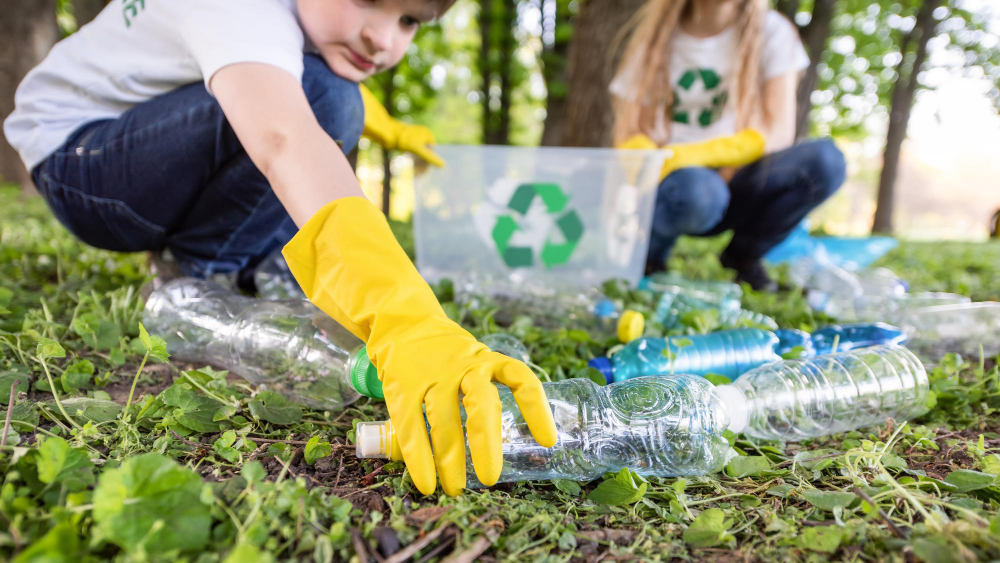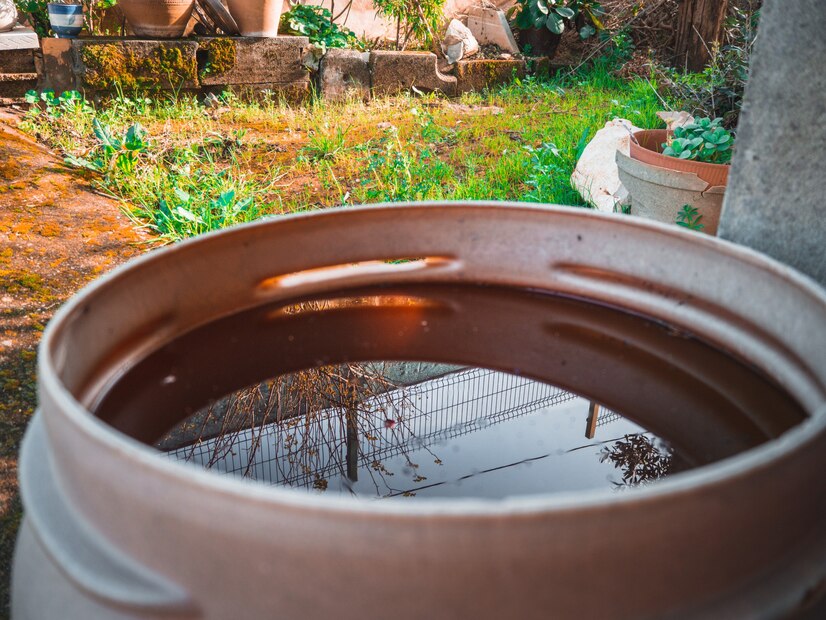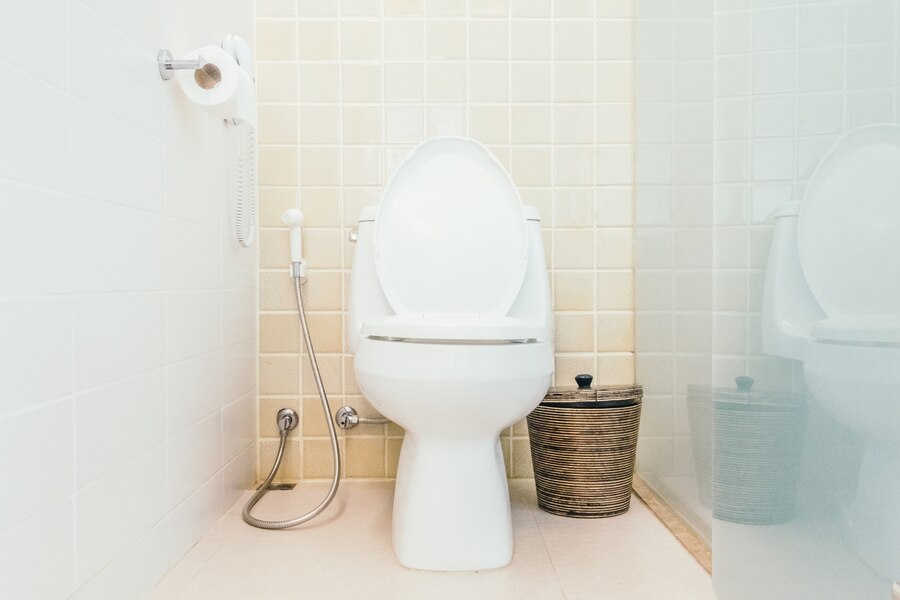
Photo by Alena Koval on Pexels
Though the impact of climate change may not affect us or our lifestyles right now, it’s still a reality that’s inching closer each day. Every creature on Earth faces a threat from this looming change, largely driven by human actions. But we can still help. Going green starts with small steps we each take in our daily lives—collective action towards a greener planet is paramount.
Did you know that the average American uses 650 pounds of paper each year? A 100 million tons of wood could be saved each year if all that paper was recycled. Switching to an eco-friendly lifestyle doesn’t mean a complete overhaul overnight. It’s all about those little choices we make every day that add up to big changes. In this guide, we’ve lined up 25 super simple ways for you to easily slide into greener habits, making a real difference for our planet and paving the way for a sustainable future for everyone.
1. Switch off lights when not in use.
This is a no-brainer. But you’d be surprised how much energy and money you can save just by flipping off the switch when you leave a room. This simple act can reduce energy consumption and lower your electricity bills. It’s a win-win for you and the planet.
Moreover, making a habit of this simple action encourages a mindset of conservation, which might lead you to adopt even more eco-friendly habits over time. Every little bit counts, and it all begins with the flick of a switch!
2. Unplug electronics that aren’t in use.
Phantom power is a real energy waster. Even when turned off, your gadgets and appliances suck up energy. Unplugging them can save up to 10% on your electricity bill. Plus, it’s a good safety habit too!
Additionally, consider using smart power strips. They cut off the power to your devices when they’re not in use, helping to save energy effortlessly.
3. Recycle paper, plastic, and glass.

Photo by Frimufilms on Freepik
Recycling is your way of giving materials a second chance while reducing the strain on our landfills. Did you know that recycling a single aluminum can save enough energy to run a TV for 3 hours? Also, every ton of paper recycled saves 17 trees and over three cubic yards of landfill space. Keep a recycling bin handy to make this practice a no-brainer.
4. Use reusable bags, bottles, and containers.
Switching to reusables is a straightforward step toward reducing your waste. Imagine—if just one person switches to a reusable bottle, they could save about 156 plastic bottles from trashing the environment each year. Now think of how many bottles that is times the number of people on our planet. That’s a lot, isn’t it?
Plus, with so many stylish and functional designs out there, carrying reusable items can be a fun and personal way to express yourself while saving the planet.
5. Install LED bulbs.
LED bulbs are the torchbearers of energy-efficient lighting. They use about 75% less energy and last 30 times longer compared to traditional incandescent bulbs. Yes, incandescent bulbs look beautifully aesthetic, but swapping to LED is a bright idea for your pocket and the Earth (plus, there are smart LED bulbs that let you change the color of the lights! Neat, huh?).
And don’t forget, less frequent bulb replacements mean fewer bulbs in landfills and less time spent on a ladder changing those hard-to-reach bulbs. It’s a bright choice all around!
6. Fix leaks promptly.

Photo by Freepik
A small drip might not seem like much, but it adds up. A leaky faucet dripping at the rate of one drip per second can waste more than 3,000 gallons of water per year. So grab a wrench or call a plumber and nip that drip in the bud.
7. Turn off the tap while brushing your teeth.
Sometimes, it’s the little habits that matter the most. It may not seem like much, but letting the water run while you’re brushing your teeth can waste a significant amount of water! This is a simple switch but can save up to 8 gallons of water a day. That’s over 200 gallons a month for just one person! It’s all about creating eco-conscious habits that will stick with you. This small action every morning and night sets the stage for a more water-wise lifestyle.
8. Plant a tree.
Trees are nature’s lungs, soaking up carbon dioxide and releasing oxygen. Plus, they provide shade, beautify spaces, and create homes for wildlife. A single tree can absorb as much as 48 pounds of carbon dioxide per year. Imagine if every single adult could plant at least one tree!
Moreover, planting a tree is a lifelong investment in our planet. It’s a positive step towards creating a greener, more lush environment for future generations.
9. Compost kitchen waste.
Composting is nature’s way of recycling. It enriches the soil, reduces landfill waste, and cuts down on methane, a potent greenhouse gas. Your leftover peels and grounds can do wonders for your garden and the planet.
Besides, composting is a fantastic educational activity for kids to learn about sustainability. It’s a full circle moment seeing food scraps turn into rich, nutritious soil.
10. Opt for e-bills and online subscriptions.
Going digital reduces the demand for paper, saving trees and the energy used in paper production. Plus, it declutters your space and keeps your information easily accessible with just a click. Plus, managing your bills and subscriptions online is a huge time-saver. It’s a simple step towards a paperless world, one click at a time!
11. Reduce meat consumption.
Shifting towards a plant-based diet or simply reducing meat intake can have a substantial positive impact on the environment. The meat industry generates nearly one-fifth of the man-made greenhouse gas emissions worldwide, and livestock production accounts for almost 30% of global biodiversity loss. And what’s biodiversity? It’s essential what makes our ecosystems function (soil fertilization, cleansing of water and air, pollination, nutrient recycling, etc.).
Moreover, a meatless meal now and then can introduce you to a variety of delicious and nutritious foods you might not have tried before. It’s a tasty exploration that benefits your health and the planet!
12. Walk, bike, or use public transport.

Photo by Pressfoto on Freepik
Leaving the car at home and choosing greener modes of transportation significantly lowers your carbon footprint. Walking, biking, or using public transport are excellent ways to move around while keeping emissions low.
Your destination’s a little far? Then it’ll be a fantastic opportunity to get some exercise, enjoy fresh air, and even save money on fuel and parking. It’s a healthy, eco-friendly choice all around!
13. Buy locally produced goods.
Purchasing local goods supports nearby producers and reduces the need for long-distance transportation, lowering the associated emissions. It’s a great way to contribute to your local economy and reduce your carbon footprint.
Local markets often offer fresh, in-season produce that not only tastes better but also has a lower environmental impact. It’s a community-centered choice that’s green at heart!
14. Choose energy-efficient appliances.
Energy Star-rated appliances are designed to save energy without sacrificing performance. They can significantly lower your electricity bills while reducing emissions.
Over their lifetime, these appliances can save you a substantial amount of money and help conserve energy on a larger scale. It’s a smart investment for a greener home.
15. Set up a rainwater harvesting system.

Photo by Wirestock on Freepik
Harvesting rainwater is a brilliant way to conserve water, reduce your water bills, and lessen the demand on local water supply. The simplest way to do this is to place a rain barrel at a gutter downspout to collect rainwater.
It’s a sustainable practice that can be used for watering plants, flushing toilets, or even washing clothes. With a proper filtration system, harvested rainwater can also serve many other household needs. It’s a classic way to make the most out of nature’s resources!
16. Use a programmable thermostat.
A programmable thermostat is a nifty device that allows you to set temperatures for different times of the day, reducing energy consumption when you’re not at home. It’s estimated that homeowners can save about 10% of their bills with a properly set programmable thermostat.
Plus, it’s a comfort too! Your home is cozy and warm in winter or cool and refreshing in summer right when you step in, all while being kinder to the planet.
17. Opt for solar energy if possible.
Buying an entire solar system to power your home is going to need a heftier investment, but so start small and buy smaller panels or create systems that can power, say, a small pump or generator that can be used for necessities during blackouts.
Harnessing the sun’s power is a remarkable way to lower your electricity bills and reduce your carbon footprint. The average residential solar PV system can save many tons of carbon dioxide being emitted into the atmosphere over its lifetime. Solar energy is a clean, renewable resource that is becoming more accessible. It’s a bright step towards a sustainable, eco-friendly lifestyle!
18. Install a low-flow toilet.

Photo by Mrsiraphol on Freepik
Low-flow toilets are designed to use significantly less water per flush, conserving thousands of gallons of water per household each year. This swap is a great way to see a reduction in your water bill and play a part in water conservation, a critical concern in many areas around the world. Even better, use the rainwater you collect to flush your toilets!
19. Grow your own food.
Growing your own food can be a rewarding way to reduce your environmental impact. It eliminates the transportation and packaging that comes with store-bought produce. Even with a home with a modest backyard, you can plant hardy greens, herbs, and more. If you have the space for it, try raising some small fowl, like pheasant chicks, for meat.
There’s nothing like the taste of home-grown veggies and herbs and meat. It’s an enriching hobby that brings you closer to nature, right in your backyard.
20. Support eco-friendly companies.
Supporting businesses that prioritize sustainable practices is a great way to promote eco-friendliness. When you choose to buy from eco-conscious brands, you’re voting for a greener planet with your wallet.
It’s a way to encourage more companies to adopt sustainable practices and contribute to a greener economy. Plus, eco-friendly products often have a lesser impact on your health and the environment.
21. Avoid single-use plastics.

Photo by Freepik
Single-use plastics are a major environmental concern, contributing significantly to litter and landfill waste. These include plastic straws, coffee stirrers, soda and water bottles, most food packaging, and more. By choosing reusable options, you’re not only reducing waste but also promoting a culture of sustainability.
There’s a variety of eco-friendly alternatives available, from reusable shopping bags to stainless steel straws, making it easy to ditch the disposable lifestyle.
22. Participate in local clean-up events.
Joining local clean-up events is a hands-on way to combat litter and promote community engagement. It’s about taking responsibility for our shared spaces and enjoying a cleaner, greener neighborhood.
Plus, it’s a fantastic way to meet like-minded individuals who share your passion for the environment. Together, you can make a tangible difference in your local area.
23. Practice mindful shopping—buy only what you need.
Mindful shopping is about being aware of your consumption patterns and opting to buy only what you need. This habit not only saves you money but also reduces the amount of waste generated. It’s an approach that promotes a simpler, less cluttered lifestyle while also being kinder to our planet.
24. Educate yourself and others on sustainability.

Photo by Freepik
Education is a powerful tool for change. Understanding the principles of sustainability and sharing this knowledge with others can have a ripple effect in your community. Whether it’s through reading, attending workshops, or engaging in local environmental groups, education empowers us to make informed, eco-friendly choices.
25. Advocate for green policies in your community.
Advocacy for green policies can lead to systemic change. By voicing your support for eco-friendly initiatives in your community, you help build a foundation for sustainable practices.
Engaging with local leaders, attending town hall meetings, and voting for green policies are proactive steps toward a more sustainable community. Your voice can be a powerful catalyst for change!
Conclusion
Start going green with small, conscious choices every day. Each step, no matter how small, contributes to a larger collective effort to preserve our planet. Whether it’s by reducing waste, conserving energy, or supporting sustainable practices, each action creates a ripple of positive change. It’s an invitation to tread lightly on Earth, fostering a legacy of sustainability for generations.



